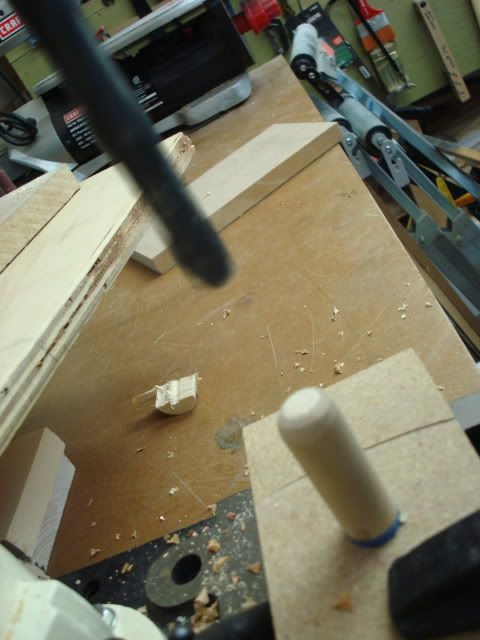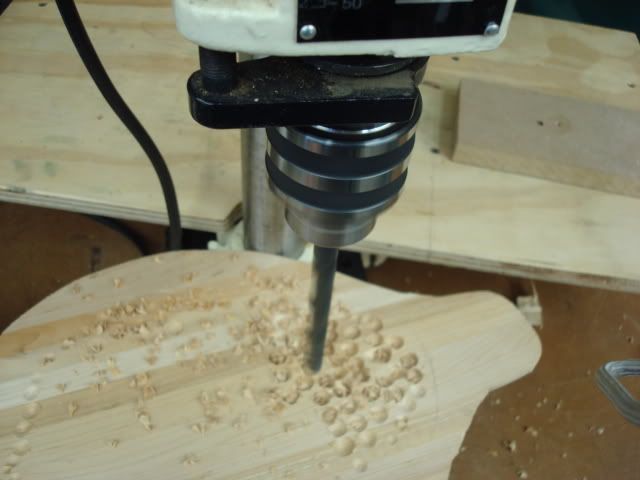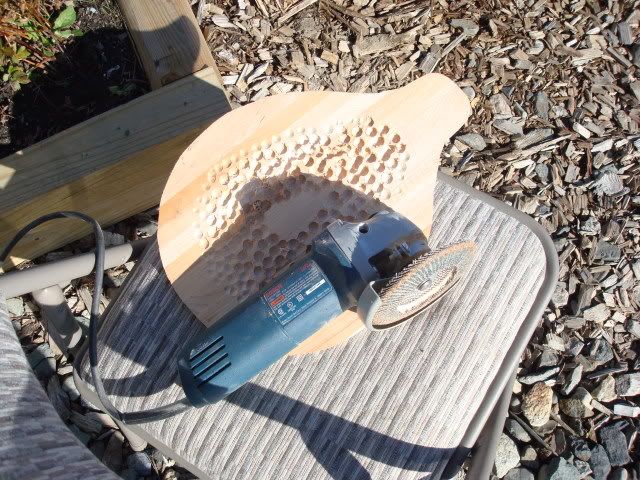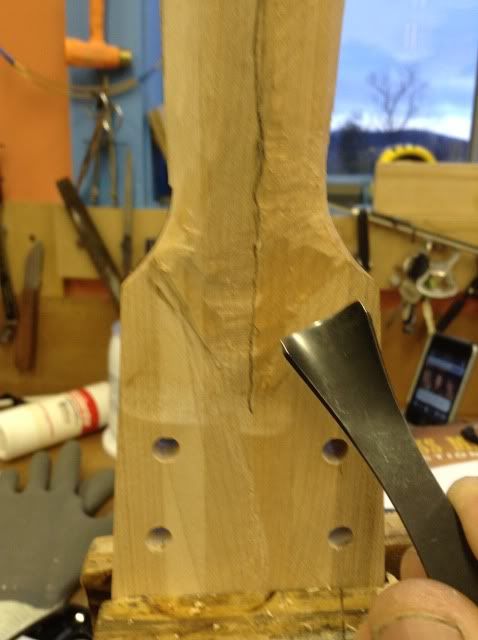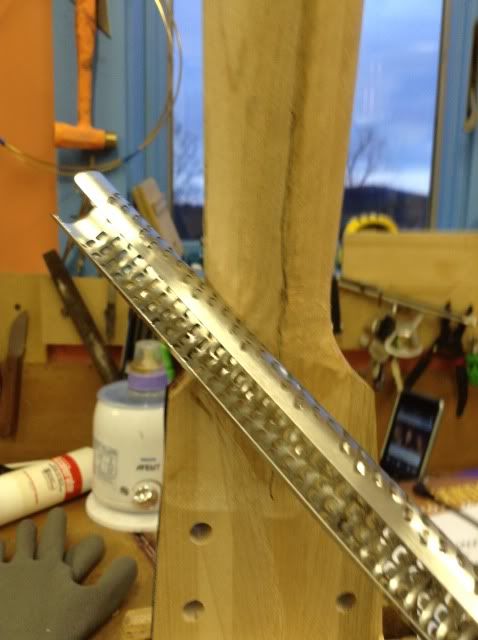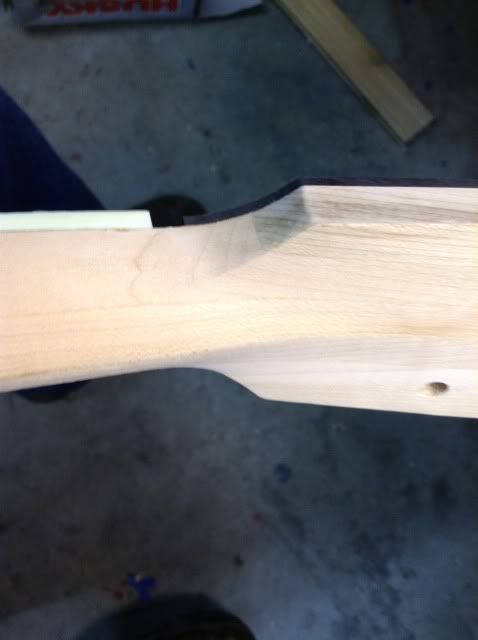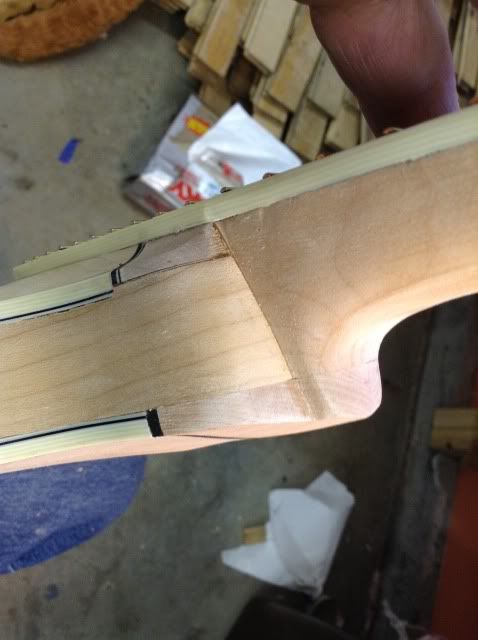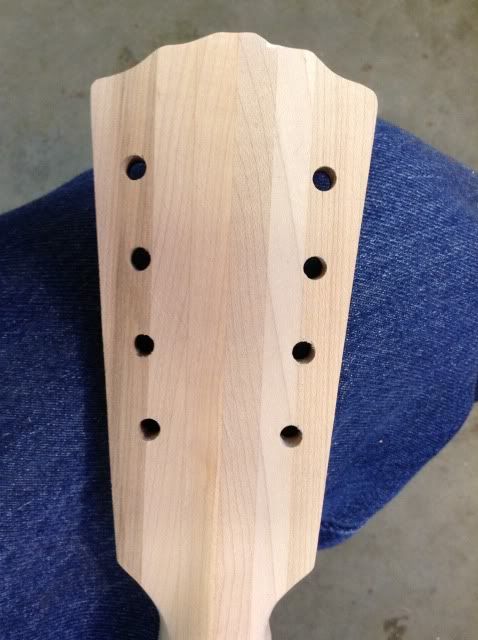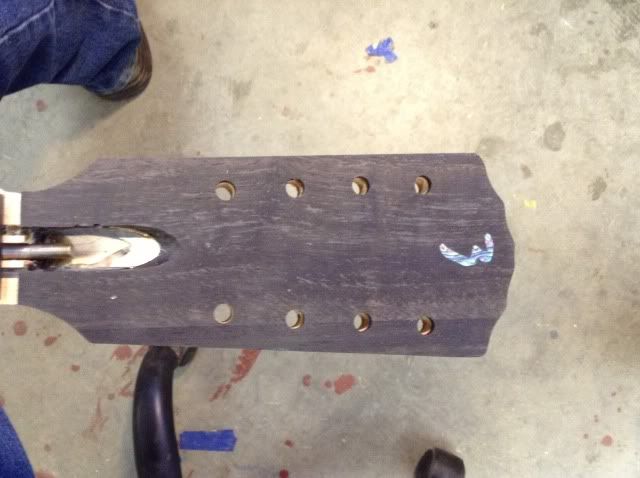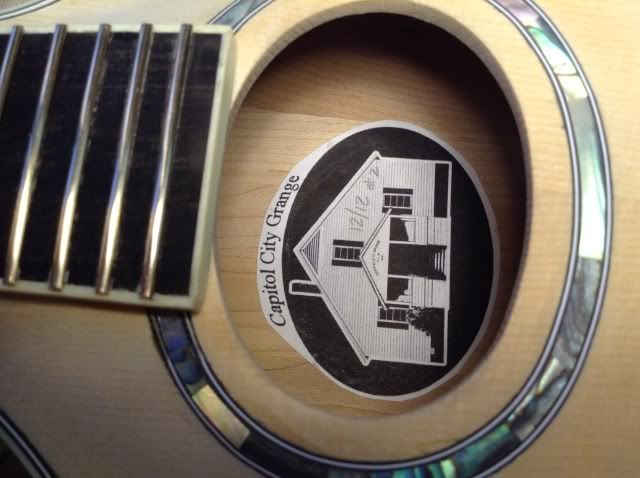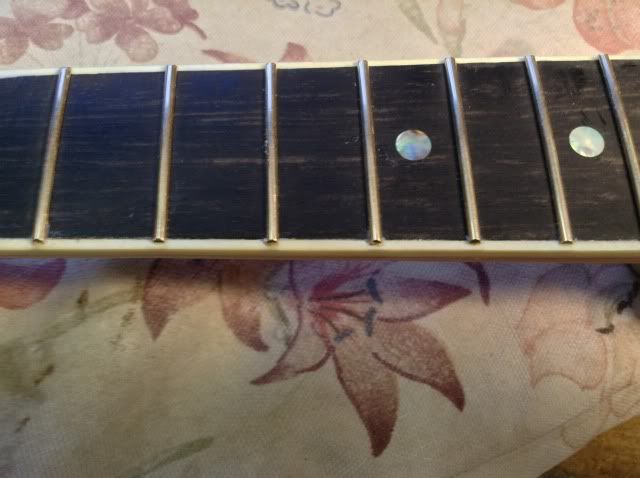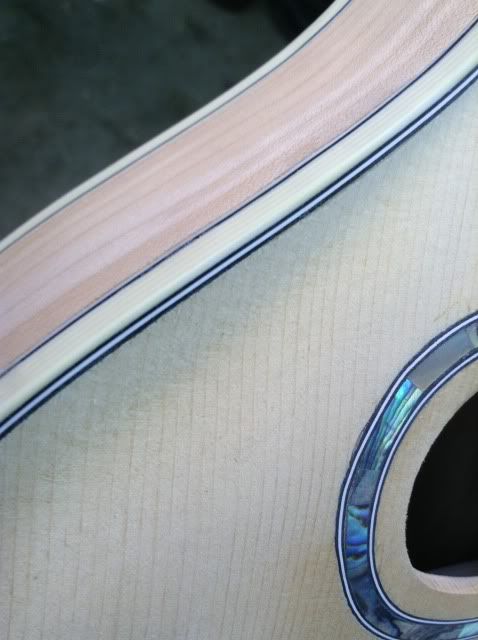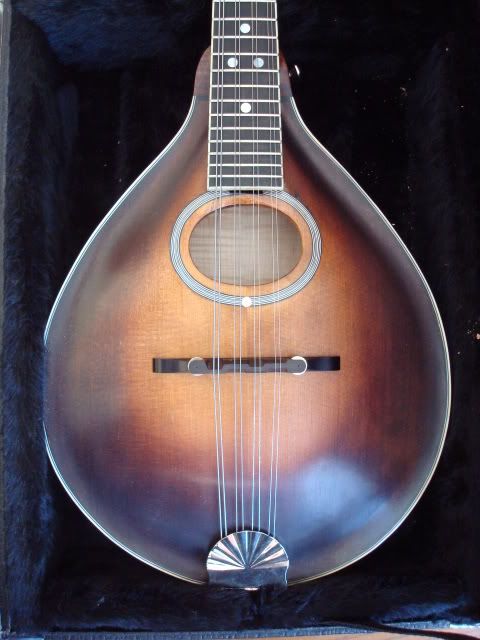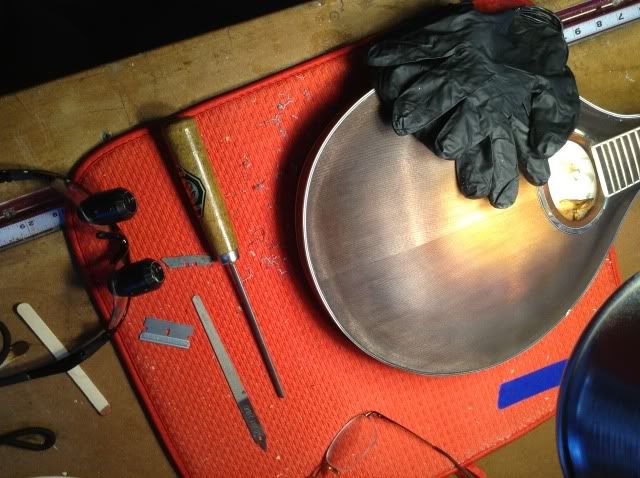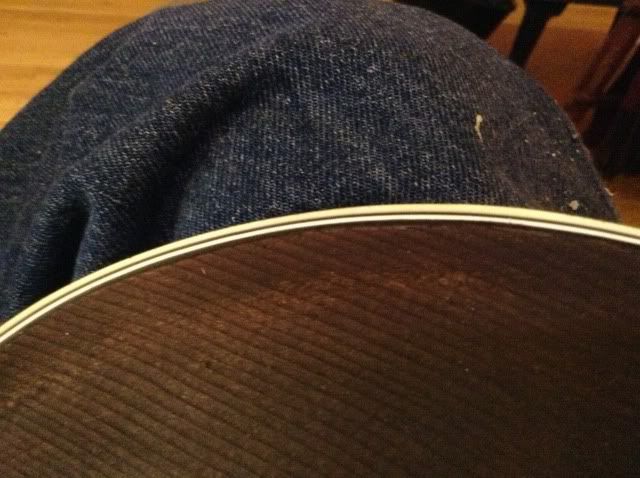Anyway we raised bunches of cash to replace the floor, BUT I wanted as much of the old floor as I could get my hands on because I felt it had tremendous mojo. 50 years of dance and the best live old timey and Celtic music available anywhere. So I now have a lot of old flooring to fool around with (i have even tried to sell some on e-bay without much luck). There is lots of waste involved but I'm now in the process of making two A-type mandolins using this wood.
Made up a butcher block type back and neck from this beautiful hard maple. Used a neat trick from finewoodworking to eliminate snipe on these boards--glued sacrificial strips on the sides of the item to be planed and all the snipe then occurs outside the profile-- very cool.
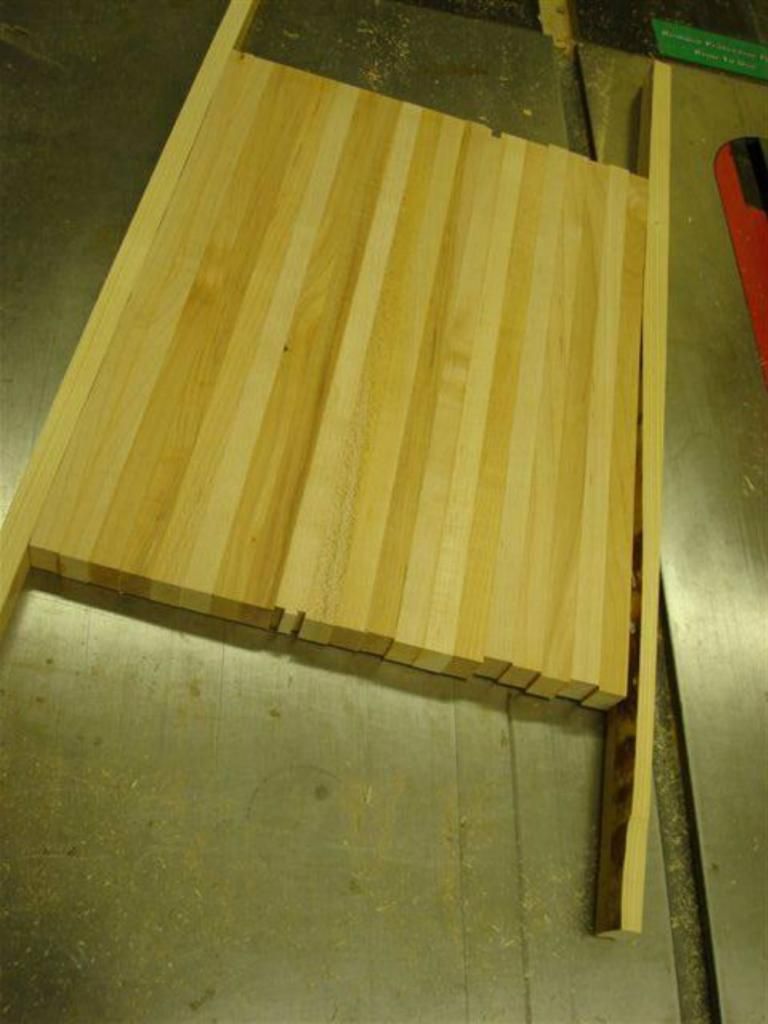
Then cut out and carved the back
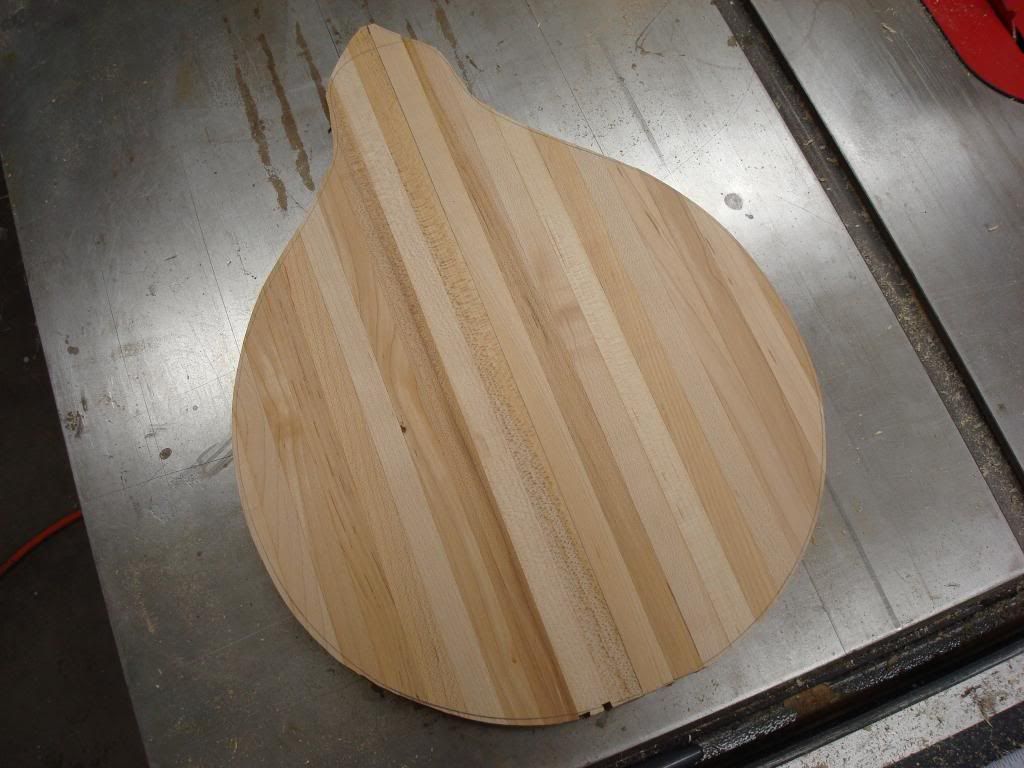
Using some Lutz spruce for the soundboard
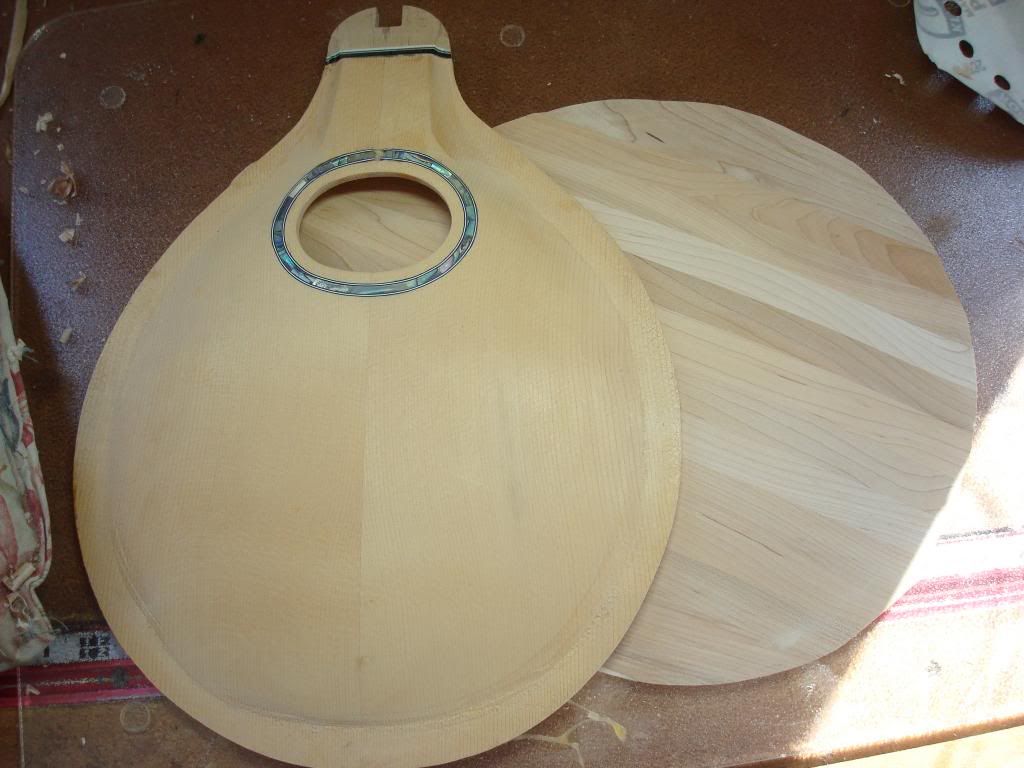
And am to the point of gluing the top to the rims
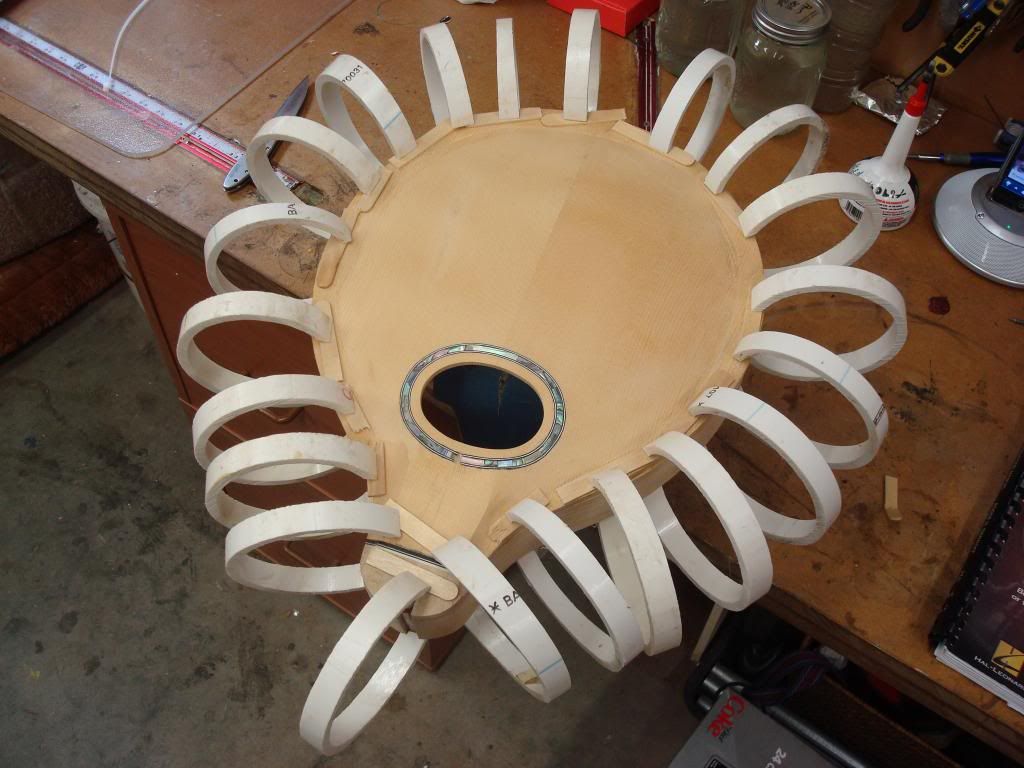
Don't know how much I will be documenting the entire build but though you-all might be interested in the concept. Using techniques gleaned from Arnt, Siminoff, Steve Stevens and Dudenbostel. At least the first two will be sold or raffled to benefit the Grange Hall.
Thanks for looking
MikeZ

